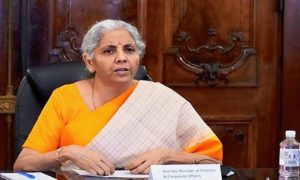The government is assessing a proposal to increase the tax-deductible amount on interest earned from savings accounts to ₹25,000, people familiar with the matter told ET. A suggestion in this regard was made by banks at a meeting with key finance ministry officials last week, they said.
“It is under review, and there could be some relief for banks, which have demanded incentives to shore up deposits,” said a government official.
A final call on the proposal will be taken closer to the budget announcement.
The 2020 budget had introduced a separate income tax regime that was simpler but eschewed exemptions, allowing taxpayers to choose depending on their financial circumstances.
Under the older tax regime, interest earned up to Rs 10,000 annually from savings accounts is tax-exempt under Section 80TTA of the Income Tax Act. For senior citizens, aged 60 and above, this limit is pegged at Rs 50,000 and includes interest income earned from fixed deposits under Section 80 TTB.
Read More: Forex Update: India’s Foreign Exchange Reserves Fall $1.71 Billion to $652 Billion
Under the new tax regime, these benefits were withdrawn. However, under Section 10(15)(i), taxpayers receiving interest on their Post Office savings accounts can claim exemptions up to Rs 3,500 for individual accounts and Rs 7,000 for joint accounts. Banks want the benefits under both tax regimes.
“Both issues, including enhancement of the old limit and allowing interest income earned from savings accounts in scheduled commercial banks (SCBs) under existing regulations in the new regime, are being deliberated,” said the person cited above, adding that lenders had earlier made a presentation on this issue.
Banks have been making the case for incentivising deposits amid growing concern over the widening credit-deposit ratio.
Read More: What Are the Latest GPF and Small Saving Interest Rates for July-September 2024? Here’s a Look
In its latest Financial Stability Report, the Reserve Bank of India (RBI) noted that households were diversifying financial savings, allocating more to non-banks and the capital market. The report noted that the growing gap is reflected in the rising credit-deposit (C-D) ratio, which has been on the rise since September 2021, peaking at 78.8% in December 2023 before moderating to 76.8% at the end of March.
RBI Seeks Action
Earlier this week, the country’s largest private sector lender, HDFC Bank, reported that its current account-savings account (CASA) deposits fell 5% on a sequential basis to Rs 8.63 lakh crore during the first quarter of the ongoing financial year.





































